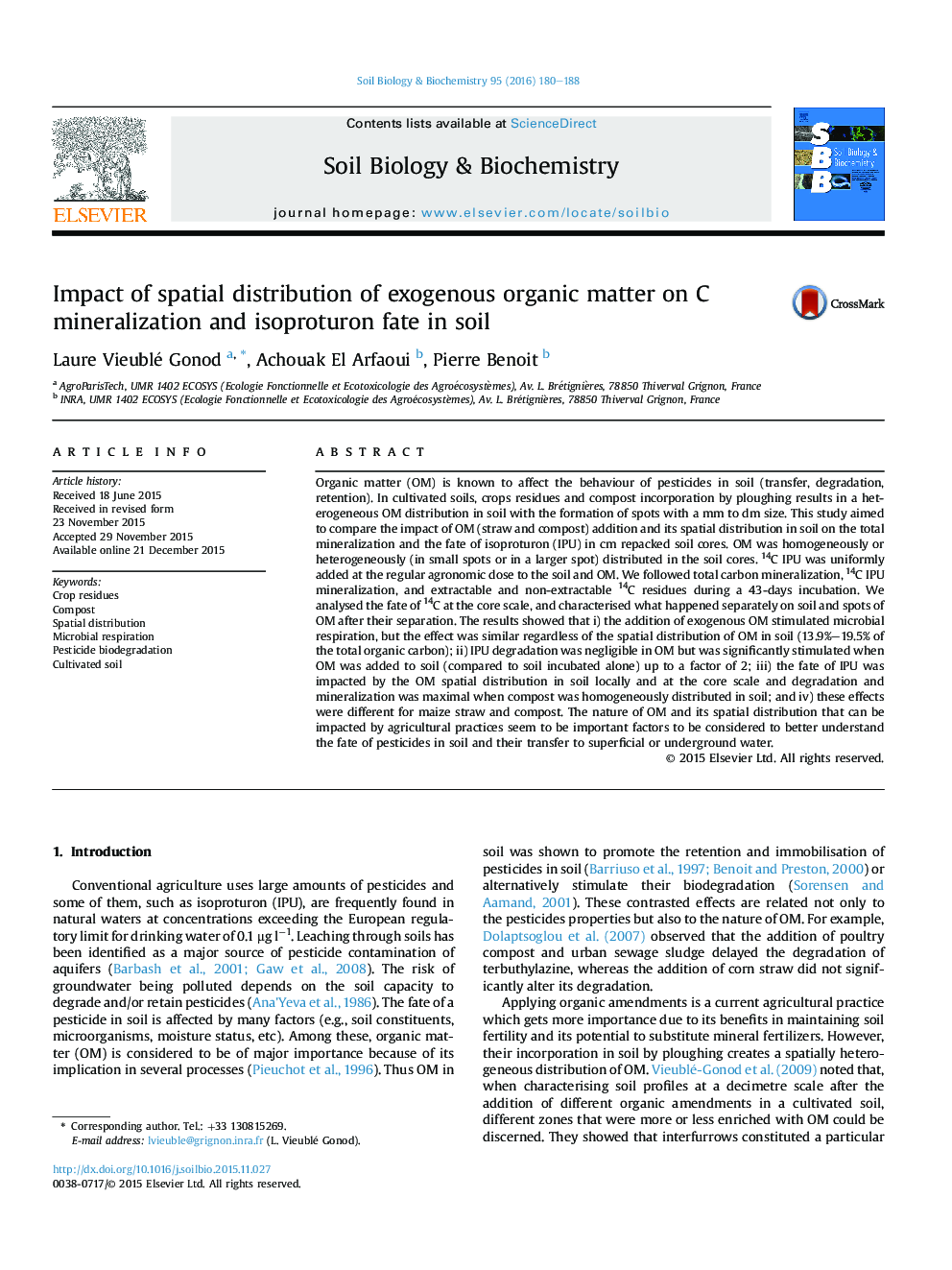| Article ID | Journal | Published Year | Pages | File Type |
|---|---|---|---|---|
| 2024277 | Soil Biology and Biochemistry | 2016 | 9 Pages |
•Microbial respiration not affected by the different spatial locations of OM in soil.•Fate of isoproturon impacted by the initial spatial distribution of compost in soil.•Few effects of straw addition to soil on the fate of IPU at the core scale.•Fate of IPU different in spots of compost and in the surrounding soil.
Organic matter (OM) is known to affect the behaviour of pesticides in soil (transfer, degradation, retention). In cultivated soils, crops residues and compost incorporation by ploughing results in a heterogeneous OM distribution in soil with the formation of spots with a mm to dm size. This study aimed to compare the impact of OM (straw and compost) addition and its spatial distribution in soil on the total mineralization and the fate of isoproturon (IPU) in cm repacked soil cores. OM was homogeneously or heterogeneously (in small spots or in a larger spot) distributed in the soil cores. 14C IPU was uniformly added at the regular agronomic dose to the soil and OM. We followed total carbon mineralization, 14C IPU mineralization, and extractable and non-extractable 14C residues during a 43-days incubation. We analysed the fate of 14C at the core scale, and characterised what happened separately on soil and spots of OM after their separation. The results showed that i) the addition of exogenous OM stimulated microbial respiration, but the effect was similar regardless of the spatial distribution of OM in soil (13.9%–19.5% of the total organic carbon); ii) IPU degradation was negligible in OM but was significantly stimulated when OM was added to soil (compared to soil incubated alone) up to a factor of 2; iii) the fate of IPU was impacted by the OM spatial distribution in soil locally and at the core scale and degradation and mineralization was maximal when compost was homogeneously distributed in soil; and iv) these effects were different for maize straw and compost. The nature of OM and its spatial distribution that can be impacted by agricultural practices seem to be important factors to be considered to better understand the fate of pesticides in soil and their transfer to superficial or underground water.
